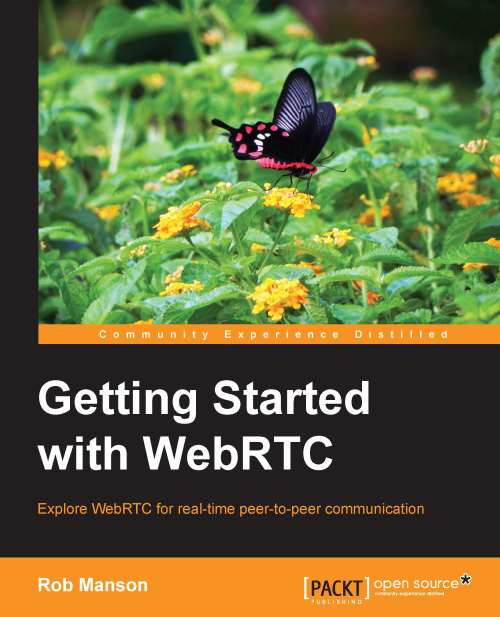There are some companies that have been working on WebRTC since before the term was coined, and there are some that are just realizing the potential of this real-time communications technology. Everyone has to start somewhere, and there is a great resource to help understand and get started with WebRTC.
“Getting Started with WebRTC” is a book by Rob Manson, CEO and co-founder of buildAR.com and chairman of the W3C Augmented Web Community Group. The book is targeted toward developers with basic HTML and JavaScript experience looking to, as appropriately titled, get started with developing WebRTC applications and functionality. I found the movement and layout of the chapters made it very easy to understand, bringing the topic of WebRTC development from the basics and progressively becoming more technical, with step-by-step instructions on developing different functions for WebRTC.


The book begins by offering an introduction into WebRTC, followed by a more technical introduction, more specifically catered to developers, coding and standards. It then offers steps on how to quickly and easily create a practical peer-to-peer video chat application, an audio-only call option, and how a WebSocket-based signaling server can also be used to enable real-time text-based chat.
Manson does a great job of covering the basics of WebRTC leading up to development and making them really easy to understand. He covers the current state of browser support and different APIs. What I was surprised to see missing was one topic related to WebRTC I seem unable to avoid – video codec standardization. There is an ongoing discussion on whether VP8 or H.264 will be decided on as the standard video codec for WebRTC, but this book doesn’t feature much coverage on that.
Some of the areas predicted to see an immediate impact from WebRTC are customer service, business and team communication and education. The book has an entire chapter dedicated to the different aspects of integrating WebRTC in an educational environment, including key components related to e-learning applications, challenges for working with WebRTC in education and benefits for implementing WebRTC in e-learning applications.
There’s also a chapter focusing on team communication, and extending communication tools people are already comfortable with, such as social media and audio and video conferencing platforms, to the capabilities of WebRTC. WebRTC eliminates many hurdles these solutions provide, and enables people to seamlessly bring real-time features and interaction to team collaboration and communication.
All developers should keep this book handy. It’s a great resource for when you need to revisit technical aspects for creating WebRTC applications and for understanding the different parts that make up WebRTC.
Edited by
Cassandra Tucker